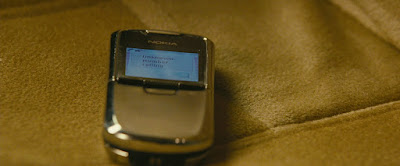Wednesday, November 28, 2018
JOHN F. KENNEDY
"The problems of the world cannot possibly be solved by skeptics or cynics whose horizons are limited by the obvious realities. We need men who can dream of things that never were," John F. Kennedy.
(John Fitzgerald "Jack" Kennedy, commonly referred to by his initials JFK, was an American politician who served as the 35th President of the United States from January 1961 until his assassination in November 1963; 1917-1963.)
Tuesday, November 27, 2018
CHRISTIAN DIOR
"By being natural and sincere, one can often create revolutions without having sought them," Christian Dior.
(French fashion designer, best known as the founder of one of the world's top fashion houses, also called Christian Dior, which is now owned by Groupe Arnault. His fashion houses are now all around the world, 1905-1957).
Friday, November 9, 2018
Slumdog Milionaire: Breakthrough in Muscular Dystrophy
Some of the many forms of Muscular Dystrophy include Myotonic (or 'Steinert's Disease' which is characterized by the inability to relax muscles at will following contractions. Myotonic Muscular Dystrophy is the most common form of adult-onset MD. Muscles in the face and neck are affected first.), Facioscapulohumeral ("FSHD" muscles in face and shoulders weaken), Congenital (affects both boys and girls. It is apparent at birth or before two years of age. other sub-forms progress slowly and cause mild disability verses others which progress rapidly, causing severe impairment), and Limb-Girdle (hip and shoulder muscles affected first. experience difficulty lifting front part of foot causing frequent trips while walking. onset usually begins in childhood or teen years).[A]
With electromyography an electrode needle is inserted into the muscle to be tested. Electrical activity is measured as you relax and as you gently tighten the muscle. Changes in the pattern of electrical activity can confirm a muscle disease. Genetic testing such as blood samples check for possible mutations in some genes that cause different types of Muscular Dystrophy. Tests in which a small piece of muscle is removed by an incision or a hollow needle is known as muscle biopsy. An analysis of this biopsy of the tissue sample can distinguish muscular dystrophies from other muscle diseases. Lastly, heart-monitoring tests check a patients heart function in particular those with myotonic muscular dystrophy.[B]
Eteplirsen (Exondys 51), the first medication to be approved by the Food and Drug Administration specifically to treat Duchenne muscular dystrophy. It was approved conditionally in 2016 and will continue to be evaluated during an additional two years of use. Although the medication appears safe, it's not clear how effective the drug is. It's definitely not a cure for DMD, but it may increase muscle strength in some people treated with the drug. Eteplirsen acts on specific gene variants that affect approximately one in seven people with DMD. [B]
Then there are the several types of therapy to choose from and available assistive devices which can improve quality of life. Muscular dystrophy can restrict the flexibility and mobility of joints. Limbs often draw inward and become fixed in that position. Range-of-motion exercises can help to keep joints as flexible as possible.[C]
Low-impact aerobic exercise, such as walking and swimming, can help maintain strength, mobility and general health. Some types of strengthening exercises also might be helpful. But it's important to talk to your doctor first because some types of exercise might be harmful. Braces can help keep muscles and tendons stretched and flexible, slowing the progression of contractual. Braces can also aid mobility and function by providing support for weakened muscles.[C]
Mobility aids such as canes, walkers and wheelchairs can help maintain mobility and independence. As respiratory muscles weaken, a sleep apnea device may help improve oxygen delivery during the night. Some people with severe muscular dystrophy may need to use a machine that forces air in and out of their lungs (ventilator). Surgery may be needed to correct a spinal curvature that could eventually make breathing more difficult.[C]
RESEARCH:
A recent landmark study has successfully treated muscle wasting in large mammals. These results have given both doctors and patients hope in a new treatment for muscular dystrophy (most common genetic condition in children that is ultimately fatal). Researchers from this particular study were able to mend mutations which is also cause the very same disease in dogs. Before the procedure is secured as safe and effective for human patients much more work is needed in future animal studies. They believe that a clinical trial involving patients with Duchenne muscular dystrophy could be launched within a few years.[D]
Researchers led by Eric Olson at the University of Texas Southwestern Medical Center used a powerful but experimental gene-editing procedure known as Crispr-Cas9 to correct mutations in the dystrophin gene in four one-month-old dogs. The therapy uses harmless viruses to smuggle the gene-editing molecules into cells. Once inside, they home in on the mutated gene and cut it, causing the cell’s natural repair system to swing into action.[D]
CONCLUSION:
The scientists went on to assess how well the procedure worked if it
was delivered by an infusion into the bloodstream instead of directly
into muscles. This time, two beagles were infused with either a high or
low dose of the Crispr gene editing molecules. Their muscle tissue was
examined eight weeks later.[D]
Researchers describe how the infusions had a variable effect on the
dogs’ muscles. In skeletal muscles, dystrophin was boosted by as little
as 3% to as much as 90% of normal levels. In crucial diaphragm and
heart muscles, dystrophin levels rose to 58% and 92% of normal levels
respectively. Discovering that intravenous delivery of the
virus resulted in significant restoration of dystrophin in the heart
and diaphragm muscles, which are important in this disease.[D]
The scientists now plan extensive studies to assess the impact of the
treatment on dogs. Those will reveal whether correcting the faulty
genes actually improves the animals’ muscles and whether any benefits
last. Because the study was small and run over a short time, it is
impossible to know how effective the approach might be at alleviating
the disease in humans.
If everything were to continue smoothly, we might be able to anticipate moving into a human trial in a few years, but caution is paramount. Observing these advances in gene editing for Duchenne Muscular Dystrophy is very exciting, but limits to this study are real too.
[A] https://www.mayoclinic.org/diseases-conditions/muscular-dystrophy/symptoms-causes/syc-20375388
[B] https://medlineplus.gov/musculardystrophy.html
[C] https://www.mda.org/disease/duchenne-muscular-dystrophy
[D] https://www.theguardian.com/science/2018/aug/30/doctors-hail-breakthrough-in-muscular-dystrophy-treatment
[E] https://screenmusings.org/movie/blu-ray/Slumdog-Millionaire/index_4.htm
*Please note! These images are not mine. They were found on various tumblr, pinterest, google image sites! If any are yours’ please let me know so that I can give you credit for them! Also the people in the images have no relation to the diseases, illnesses, or cancers I write about. Thanks so much & enjoy~








































